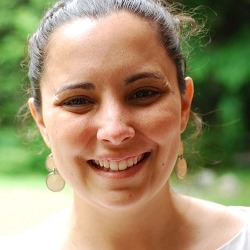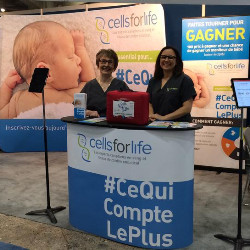Вы здесь
Educating Antenatal Care Givers About Cord Blood: Bridging the Gap
 "Cord Blood: has it ever been used?"
"Cord Blood: has it ever been used?"
"Cord blood: only good for children under 8 years old?"
"Cord Blood: can never be used for an adult?”
"Cord Blood: used for leukemia only.”
These quotes are only a sample of the general confusion that exists among health care professionals who provide “antenatal” (care that is related to pregnancy and takes place before birth) care to expectant mothers.
My journey to educate health care professionals about cord blood and cord tissue options for their patients has been full of real purpose. It seems that the news about successes in the field of cord blood and cord tissue research have been lost somewhere between the transplant physicians providing therapy and the antenatal caregivers who collect cord blood. In my 10 years on the job, I have come to believe that bridging this gap is the key to obtaining good quality collections and saving more lives with cord blood, today and in the future.
As transplant physicians seek cord blood collections that are free of contamination and contain high cell counts, and the “Diseases Treated” list continues to grow, it seems that collectors and antenatal caregivers have not been able to keep up. Cord blood is routinely used today for hematological disorders, and the regenerative medicine field continues to grow across a plethora of medical disciplines, from neurology to cardiac medicine, and more… but we have failed at effectively spreading the word in a meaningful way to a critical part of the community: the people who collect cord blood and cord tissue.
Obstetricians, midwives, and family doctors can make or break the usability of a cord blood collection, as the quality is dictated by the cleanliness (sterility) of the cord and the volume (number of cells) of the cord blood collected. However, these cells do not directly affect the practice of the medicine that they are familiar with, and they have very little formal education on the topic. To date, most of the information they receive regarding cord blood and cord tissue comes from cord blood bank educators like myself, doing their best to reach as many professionals as possible.
Health care professionals start learning in school and continue their education in conferences pertinent to their practice or specialty. There is very little cord blood or cord tissue education offered in the obstetric or perinatal educational setting, whether in school or residency curriculums, or continuing education symposia. Expecting couples have expressed in surveys that they consider their health care professional to be the most trusted source of information and knowledge. Obstetricians have expressed the feeling that they need more education on the topic of cord blood and tissue. In the absence of regular cord blood collection training, how can antenatal professionals be expected to deliver non-biased education on the topic of cord blood, or perform good quality collections? When it comes to the quickly advancing science of cord blood and cord tissue, one medical specialty is at the mercy of the other, thus they must work together to solve the existing problems regarding educational needs.
The ACOG, the SOGC, the Cord Blood Association, and other professional bodies that have a role in the continuing education of obstetricians, midwives and family doctors must work to bridge the gap between transplant physicians and antenatal care givers. The accreditation agency FACT requires that cord blood collectors be trained regularly in collection procedures. Setting guidelines for practice is not enough. Providing tools that enable the guidelines can create change. Since we cannot expect perinatal professionals to attend extended learning programs intended for transplant physicians, perhaps transplant physicians should explore the opportunity to share their advances and needs within the perinatal setting? Professional development programs for midwives and medical students on cord blood and tissue collection, banking, and therapies need to be created, ensuring consistency of curriculum across health care disciplines of antenatal health care providers.
One common goal within the cord blood community around the world is to increase the number of good quality, diverse, cord blood collections available for transplant. We know that education breeds interest in banking and that quality starts at collection. Closing the gap between the transplant physician and the cord blood and tissue collector and antenatal care givers, is vital to the continued advancement in the field of cord blood and cord tissue storage and transplant. Creating a bridge between these specialties can remedy the deficiencies that get in the way of our common goal to treat our patients to the best of our ability.
References
- Lisa Peberdy, Jeanine Young, Lauren Kearney. Health care professionals’ knowledge, attitudes and practices relating to umbilical cord blood banking and donation: an integrative review. BMC Pregnancy Childbirth. 2016; 16:81.
- David McKenna, Javesh Sheth. Umbilical cord blood: Current status & promise for the future Indian J Med Res. 2011; 134(3):261–269
- Universite de montreal programme de residence en obstetrique-gynecologie.
- 6th Edition FACT-NetCord International Standards for Cord Blood Collection, Banking, and Release for Administration: 5.2.010, 6th Edition Cord Blood Standards Rev. 0 , 01Jul2016



 With over 18 years as a nurse, Lisa has worked in many specialties throughout the maternal/child field. After spending time working with children who were terminally ill in one of Paul Newman’s “gang” camps, she decided to leave her studies in political science and history for nursing. She worked part time at the Montreal Children’s Hospital throughout her studies and fell in love with pediatrics. Once she graduated, she began her career in the pediatric intensive care unit (PICU) at the Montreal Children’s Hospital and moved on to work in the labor and delivery unit with post-partum moms and their newborns at the St. Mary’s Hospital in Montreal. Always ready for a challenge and drawn by the opportunity to learn, Lisa accepted a job that was offered to her and spent many years as a fertility nurse at Clinique Ovo, in Montreal. Throughout her time in various parts of the maternal/child specialty, Lisa developed a passion for teaching as a nurse. Whether it be teaching a set of parents regarding their child in the PICU, a new mother learning to breastfeed, or a fertility couple learning how to self-inject, she finds power in knowledge and enjoys sharing it. Intrigued by new innovations in biotechnology, she set out to work with a cord blood bank so that she could be a small part of this advancing field. Teaching expecting parents about their cord blood and tissue options as well as inspiring doctors to council their patients on the topic is a labor of love. Lisa has worked full time with Cells for Life for 10 years now. Lisa teaches birthing classes regularly and is a certified CPR instructor. Lisa is also a part time student within the specialty of pediatric nursing to receive a bachelor of science in nursing degree, and she has two incredible boys aged 7 and 10 years old. Her passion for medical innovation, and her unstoppable belief that she can learn anything to which she puts her mind, are what will always drive her to achieve her goals.
With over 18 years as a nurse, Lisa has worked in many specialties throughout the maternal/child field. After spending time working with children who were terminally ill in one of Paul Newman’s “gang” camps, she decided to leave her studies in political science and history for nursing. She worked part time at the Montreal Children’s Hospital throughout her studies and fell in love with pediatrics. Once she graduated, she began her career in the pediatric intensive care unit (PICU) at the Montreal Children’s Hospital and moved on to work in the labor and delivery unit with post-partum moms and their newborns at the St. Mary’s Hospital in Montreal. Always ready for a challenge and drawn by the opportunity to learn, Lisa accepted a job that was offered to her and spent many years as a fertility nurse at Clinique Ovo, in Montreal. Throughout her time in various parts of the maternal/child specialty, Lisa developed a passion for teaching as a nurse. Whether it be teaching a set of parents regarding their child in the PICU, a new mother learning to breastfeed, or a fertility couple learning how to self-inject, she finds power in knowledge and enjoys sharing it. Intrigued by new innovations in biotechnology, she set out to work with a cord blood bank so that she could be a small part of this advancing field. Teaching expecting parents about their cord blood and tissue options as well as inspiring doctors to council their patients on the topic is a labor of love. Lisa has worked full time with Cells for Life for 10 years now. Lisa teaches birthing classes regularly and is a certified CPR instructor. Lisa is also a part time student within the specialty of pediatric nursing to receive a bachelor of science in nursing degree, and she has two incredible boys aged 7 and 10 years old. Her passion for medical innovation, and her unstoppable belief that she can learn anything to which she puts her mind, are what will always drive her to achieve her goals.